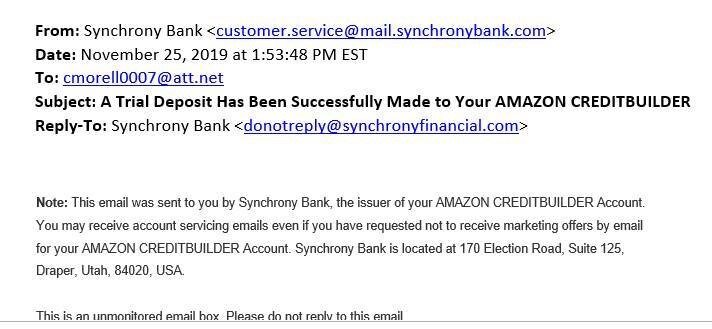Bernie’s Blog
Happy New Year Again: Retirement Plan Guidelines for 2020 (Part 2)
This blog will focus on the major 2020 changes to distributions from retirement accounts. The last blog entry focused on the 2020 changes to contributions to retirement accounts so feel free to look back to refresh your memory.
You may have heard of the new SECURE Act which was signed into law on December 20, 2019. We know you will feel more secure to know that “SECURE” is an acronym for “Setting Every Community Up for Retirement Enhancement Act”. The government has been busy with other priorities since December 20, so many of your usual information sources, including us, have not been fully updated yet. In truth, the government officials have not all yet agreed on some of the technicalities so just call us with questions and we will work through the implications individually with you as needed.
Required Minimum Distributions (RMDs)
- Participants will now be able to delay taking RMDs from their traditional IRAs until they reach age 72 (up from age 70 ½). This change only applies to those who turn 70 ½ in 2020 or later. If this applies to you, we have talked with you about it. If you are already taking RMDs, you must continue even if you are not yet 72. This is a good thing for most of us!
Inherited Retirement Accounts
- Beneficiary IRAs (non-spousal) must now be completely distributed within 10 years (instead of over the lifetime of the beneficiary). The rules for distribution to a spouse have not changed – the distributions are treated as if the IRA belonged to the spouse all along. Note that this means that all the income taxes must now be paid within 10 years. This is a massive, and largely unfavorable, change for most of us.
- Roth (non-spousal) Beneficiary IRAs must now also be distributed within 10 years, but there is of course no income tax due.
- This change might make a Roth IRA conversion more attractive as an estate planning strategy. We will discuss with you if applicable.
Adoption/Birth Expenses
- Penalty-free withdrawals from traditional retirement plans are now allowed for birth or adoption expenses, up to certain limits. Taxes must be paid on the withdrawals.
Happy New Year: Retirement Plan Guidelines for 2020 (Part 1)
Happy New Year everyone! This blog will focus on 2020 changes in funding to retirement accounts and the next one will cover the 2020 changes to distributions from retirement accounts. Spoiler alert: the distribution changes are potentially complicated and we will plan to cover those with you individually as well.
401K/403B/TSP et al:
- Contribution limit increased to $19,500 (up $500)
- Catch-up contribution limit (for those 50+) increased to $6,500 for a total of $26,000 (up from $25,000)
Roth/Traditional IRA:
- Contribution limit is $6,000 (no change from 2019)
- Catch-up contribution limit (for those 50+) is $1,000 for a total of $7,000 (no change from 2019)
- Income limit eligibility for Roth contribution:
- Phase-out begins for individuals begins at $124,000 and stops at $139,000 (up $2,000 from 2019)
- Phase-out begins for couples begins at $196,000 and stops at $206,000 (up $3,000 from 2019)
SEP IRA:
- Contribution limit is 25% of gross salary or $57,000, whichever is less (up $1,000 from 2019)
Let us know if you need help adjusting your contributions or if you have questions about your eligibility.
Paul Volcker – The Inflation Warrior
Hello, it’s Bradley, Marci’s eldest, here with another of my obituary blog posts. You may have missed it in the news, (there were a few other pressing headlines in December) but on December 8th, 2019, former Chairman of the Federal Reserve, Paul Volcker, passed away at the age of 92. I thought that given the recent focus on the Federal Reserve and interest rates, it may be worth writing a few words about him.
Paul Volcker was born in 1927 in NJ, and so grew up during the Great Depression and World War II. In his senior thesis at Princeton, Paul criticized the failure of the Federal Reserve to restrain inflation following WWII (something that clearly influenced his later thinking). After several years working for the Federal Reserve Bank of New York and Chase Bank as an economist, he joined the Nixon administration as Under-Secretary for monetary affairs and was later appointed as president of the Federal Reserve Bank of NY, and finally to the Federal Reserve Chairmanship by President Carter in 1979.
When Paul Volcker took over the Federal Reserve, the United States was facing persistently high inflation, the increase in prices (or decrease in the value of the dollar) over time. These inflation levels were due in part to higher prices of oil due to the Arab oil embargo and Iranian Revolution.
High levels of inflation can be extremely detrimental to the economy, as they discourage saving (since the value of saved dollars decreases over time). In economics, inflation can be seen as too much money chasing too few goods, resulting in higher prices.
The usual antidote to inflation is a decreased money supply. And contracting the money supply is exactly what Volcker’s Fed did. Volcker increased the Federal Funds rate (the rate that banks lend money to each other; it is generally the lowest interest rate in the economy) to 20%! By comparison, the “tightening” of interest rates in today’s Fed reached only 2.5%. These high interest rates decreased the ability of individuals and corporations to borrow money, resulting in a decrease in the money supply and corresponding decline in inflation. This strategy also contributed to a recession (and unemployment rates of 10%), but by 1983 inflation had fallen to the Fed’s target of 3%.
Following Volcker’s term as Fed Chair, inflation has never risen to the same heights as in the 1970’s. This is due (in part) to the fact that Volcker’s Fed had convinced markets that if inflation were to rise again, the Federal Reserve would raise interest rates to squash it, and as in so many things in finance, expectations became reality. This collapse of inflation led to the incredible rates of economic growth in the 90’s, and later in the 2010’s. Later in his life, Volcker became an outspoken critic of banking consolidation, including support for the “Volcker Rule” requiring the separation of commercial banks from proprietary trading (a subject beyond the scope of this already too long blog post). We will all remember Paul Volcker as the inflation warrior he was.
Merry Christmas and Happy Hanukkah!
Schwab to Acquire TD Ameritrade
As many of you have noted, it is likely that Schwab will be acquiring TD Ameritrade, which is the current custodian for our client accounts. If the deal goes through, the effective date will likely be sometime in the second half of 2020.
The obvious question is what this means for all of us. And the obvious answer is that we do not know yet. Our objective will be to make this potential transition as seamless as possible for all of you! And of course, we would love to get more responsive, more error-free service from Schwab. We will see about that part.
The good news is that we, and many of you, have been through this before. The bad news is that we, and many of you, have been through this before.
Feel free to call with questions or whining about this news. We are doing same.
Lori
ATTENTION: Synchrony Bank Customers
We know a lot of you have high yield saving accounts and/or money markets at Synchrony.
Synchrony had a very bad day on Monday and accidentally sent emails to many customers regarding trial deposit into their Synchrony accounts or Amazon Creditbuilder accounts. This was absolutely an error and Synchrony has assured me that all accounts are safe.
Here is what the emails looked like and Synchrony’s response, when I finally got through. I have since received another email on another topic. All the phone lines and website are out of service right now due to very high volume – which isn’t helping.
As usual when there is a problem of any type, I recommend that you change your Synchrony password once you can get back into your account.



